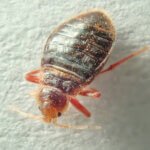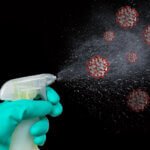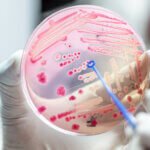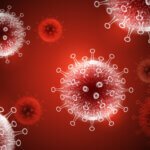The last two years have made it difficult to find a person who has not used disinfectants. The COVID-19 pandemic has led to an exponential increase in interest and demand for virucidal disinfectants. Microbe Investigations Switzerland (MIS) has provided testing services to determine the efficacy of many such disinfectants.
It is widely known that viruses on different surfaces can remain infectious and viable on surfaces for varying periods. Further, the susceptibility of viruses to chemical disinfectants depends on their formulation and concentration. Therefore, it is essential to consider these factors while determining the virucidal activity of chemical disinfectants. The testing lab should follow standardized international protocols (EN 14476).
As per the EN 14476 guidelines, the list of viruses that need to be tested when evaluating the efficacy of chemical disinfectants includes Poliovirus, Adenovirus, Norovirus, Feline Calicivirus, and Vaccinia virus.
Viral Structure
Our previous blog post discusses how the prevalence and pathogenicity of various viral strains determine their inclusion in ISO/EN-ISO protocols. However, viral structure plays a crucial role in formulating disinfectants with high potency.
This means determining the efficacy of these disinfectants involves devising protocols based on the structural markers of viral strains. This includes their mechanism of infection, sensitivity, protein markers, etc.
Also Read: What does “Eliminates 99.9% Germs” Label mean?
The Testing Stages
Testing the efficacy of disinfectants is typically divided into three phases. We will be focussing on the first and second phases in this article. Phase three tests are typically conducted under in-use conditions. However, there are no standards or drafts for this phase.
Phase I
This phase involves determining if the sample has bactericidal, fungicidal, yeasticidal, or sporicidal activity. This step is broad in scope and is performed without considering the specific areas of application.
As a result, the results of Phase I alone cannot be used for any product claims.
Phase II [Step 1]
This is where the efficacy of the samples is evaluated under laboratory conditions similar to the intended use. This is done using quantitative suspension methods such as the EN 14476.
This is typically done by exposing organisms to the product at different serialised dilutions for varying durations and temperatures, with the addition of interfering substances. These interfering substances range from blood and serum to hard water
Phase II [Step 2]
In this phase, the samples are tested with dried viruses on carriers such as glass and steel. These testing conditions are more similar to conditions encountered during the actual use of these products.
Phase III
In this phase, the samples are tested against in-use conditions, and their efficacy is determined.
EN 14476
EN 14476 test method evaluates the virucidal activity of disinfectants intended for medical use across healthcare facilities, medical devices, handwashes, hand rubs, surface disinfectants, instrument disinfectants, and textile disinfection. The primary protocol involves adding the test virus to an interfering substance in a suspension.
The choice of this “interfering substance” is based on the product claim. Post this, the sample is added to the virus suspension. The duration and temperature conditions of this step are as specified by the manufacturer.
After exposure, the samples are recovered, and the activity of the test product is neutralized by diluting in an ice-cold test medium. This is followed by serial dilutions, which are subsequently analyzed for viral infectivity.
Viral viability is tested by inoculating the suspension sample with live host cells. Based on the virus and the cell type, the duration of the test varies from 4 to 7 days. If the sample had not successfully inactivated the test viruses before neutralization, there would be visible damage to the live cells when viewed under a light microscope.
Based on the results of this step, step 2 of phase II will include carrier testing using prEN 17430, EN 16777, etc.
Also Read: The ISO 21702 Test Method Explained
Microbe Investigations
At Microbe Investigations, we understand the need for accuracy and speed. We test for the EN 14476 using the following viruses: SARS CoV-2, Beta coronavirus (43) (ATCC VR-1558), Human coronavirus (229E) (ATCC VR-740), Influenza A (H1N1) (ATCC VR-1469) Influenza A (H3N2) (ATCC VR-1679), Poliovirus, Adenovirus, Murine Norovirus.
We leverage durability and antimicrobial testing to back your product development and performance testing. Our durability assessments are optimally designed considering the intended purpose of the treated product.
This significantly reduces the time, effort, and cost associated with formulating and distributing high-quality products on the market. For more information about the EN 14476 and antiviral treated products, reach out to us here.
OUR SERVICES
Antibacterial Test | Antiviral Test | ASTM E2149 | AATCC 100 | JIS Z 2801 | JIS L 1902 | EN 1276 | ISO 21702 | ISO 18184 | EN 14476 | ISO 22196 | ISO 20743 | ISO 17299-3 | Arm in Cage Test | Room Test | Tunnel Test | Olfactometer Test | Tick Repellent Test | Minimum Inhibitory Concentration Test | Zone of Inhibition Test | ISO 846 | ASTM E2180 | ASTM D7907-14 | ASTM E3031 | AATCC 147 | AATCC 30 | ASTM G21 | ASTM G29 | EN 16615 | EN 13697 | JIS L 1922









